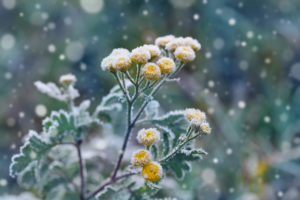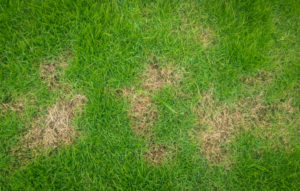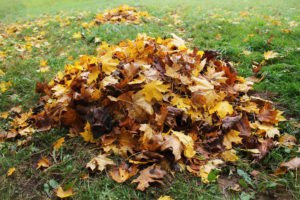Milwaukee winters are harsh, and this year will likely be no exception. It is important to perform steps to prep your yard for the winter ahead. When you follow these tips for winterizing your yard, you’re ensuring that when spring comes around your yard will be beautiful once more and less of a headache for you.
Fertilize
It is recommended you fertilize your lawn in October or November. This is because plants respond to external triggers in the fall, such as temperature changes and day length, by slowing growth and shifting food reserves from the leaves to the roots. This is characteristic of many kinds of plants, including grass. Plant roots remain active in the soil, however, and when you fertilize your grass in the fall you feed these roots and give them nutrients to store for the long winter ahead.
Fertilizing now results in beautiful and healthy grass come spring.
Weed and Test Soil
Be sure to remove any weeds, as they compete with your plants for nutrients and water. You should also perform a soil test on your lawn to test the pH levels. If tests show your soil has excessive acidity, you should apply lime as soon as possible. If tests show that your soil is too alkaline, be sure to apply sulfur before winter rolls around.
Don’t Forget the Garden
If you have a garden:
- Make sure you harvest any fruits or flowers.
- Remember to remove any old plant matter and put it in your compost bin to prevent future plant diseases.
- Rototilling in the fall can make your spring landscaping endeavors go much smoother.
- If you choose to rototill now, be sure to also apply lime if soil pH levels indicate that you need to. If you wait and apply lime in the spring, it will be too late.
Trees and Shrubs
The damage trees and large shrubs face in winter is often a result of their inability to draw water from the frozen earth. This damage can largely be prevented by watering properly in the fall.
You should avoid watering trees and shrubs in late summer/early fall before the leaves fall. This allows them to harden off for the winter. Then, after the trees have lost their leaves but before the ground freezes, give your trees and shrubs a deep watering. Be sure to cover the entire root area.
Prepare Your Tools
After spending all that time and effort winterizing your yard, it is important not to overlook your tools. Proper storage and maintenance of your tools will make springtime gardening a real (spring) breeze. Our tips:
- Bring the garden hose in and make sure to turn off its water source to prevent pipes from bursting in cold temperatures.
- Drain the gas from your lawn mower after you use it one last time. This will prevent the gas from getting gummy and creating future problems for your lawnmower. (It is recommended you do this in late fall to prevent matting under snow.)
Winterizing in the Fall Means a Better Spring!
It may seem like a lot of work, but properly winterizing your yard in late fall will allow you a smooth transition into your landscaping endeavors when spring finally arrives. And don’t forget to check out our article on how to revive your grass after winter.






